Best Exercise

Is it better to do aerobic exercise in the morning or evening ?
The best time to do aerobic exercise depends on your personal preferences, schedule, and individual needs. Morning exercise can boost metabolism, improve mental clarity, and increase energy levels, but it may also be challenging to wake up early enough and could lead to lower performance and joint stiffness. Evening exercise can reduce stress, improve flexibility, and promote relaxation, but it may interfere with sleep, have time constraints, and cause fatigue. It's essential to listen to your body and choose a time that works best for you while maintaining consistency in your fitness routine.

What is the best time to exercise for better sleep ?
This article discusses the best time to exercise for better sleep. Regular physical activity is known to improve sleep quality, but the timing of your workout can significantly impact how well you rest at night. The ideal time to exercise is in the morning or early afternoon, as these times allow for ample cooling down and winding down periods before bed. However, individual preferences may vary, and consistency is key; finding a time that works for you and sticking to it will have the most significant impact on your sleep.

What is the best way to monitor heart rate during exercise ?
Monitoring heart rate during exercise is crucial for staying healthy and achieving fitness goals. The best way to monitor heart rate during exercise depends on personal preferences and fitness goals. Wearable heart rate monitors are convenient and non-invasive, while chest straps provide accurate data. Fingertip devices are affordable and easy to use, but less accurate than other methods. Smartphone apps are free or inexpensive, but may not work well in certain situations. Ultimately, the choice between these methods should be based on individual needs and preferences.

What are the best foods to eat after a strenuous exercise session
After a strenuous exercise session, your body needs energy to recover and repair itself. Carbs are the best source of energy for your muscles and help replenish glycogen stores. Good sources of carbohydrates include whole grains, fruits, and vegetables. Protein is essential for muscle growth and repair after a workout. It helps rebuild damaged muscle tissue and increase strength and endurance. Good sources of protein include lean meats, fish, eggs, and plant-based proteins like beans and lentils. Water is important to stay hydrated and aid in recovery. Drinking water also helps flush out toxins from your body and prevent cramping. Exercise can cause electrolyte imbalances, which can lead to fatigue and cramping. Consuming foods rich in electrolytes like potassium, sodium, and magnesium can help restore balance and improve performance during recovery. Healthy fats are an important part of a balanced diet, especially after a workout. They provide energy for your body and help with hormone production and inflammation regulation. Vitamins and minerals are depleted during exercise, so it's important to consume foods that are rich in these nutrients during recovery.

Patients with fatty liver should exercise reasonably and choose the most suitable exercise for themselves

How does hydration affect exercise performance
Hydration is crucial for optimal exercise performance. Dehydration can cause fatigue, headaches, and decreased performance. To maintain hydration levels, drink water before, during, and after exercise, and consume electrolyte-rich drinks like sports drinks or coconut water. Eating foods that contain water or electrolytes can also help. Proper hydration ensures our bodies are functioning at their best.
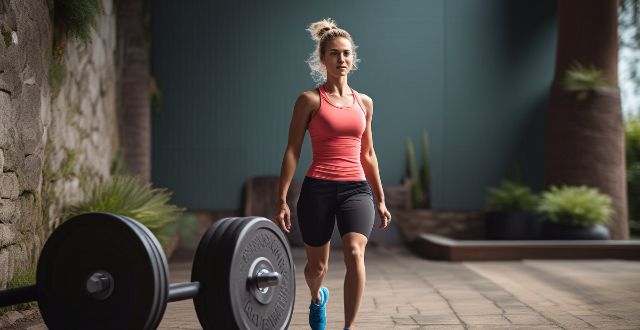
Can heart rate monitoring help prevent overexertion during exercise ?
Overexertion during exercise can lead to fatigue, muscle soreness, and injuries. Heart rate monitoring is a technique used to measure the number of times a person's heart beats per minute (bpm). By monitoring your heart rate, you can determine personalized training zones based on age, fitness level, and goals, providing real-time feedback on current heart rate during exercise. Recovery time is essential for preventing overexertion, and heart rate monitoring helps determine how long it takes for the body to return to its resting state. Best practices for heart rate monitoring include choosing the right device, calibrating regularly, warming up properly, staying hydrated, and listening to your body. Following these guidelines and listening to your body can help prevent overexertion during exercise while maximizing its benefits.
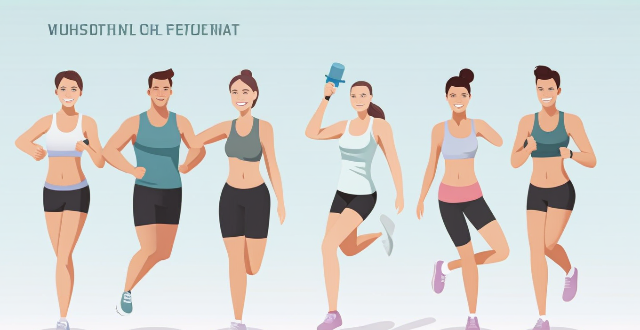
What are the best exercises for weight loss ?
Losing weight requires a combination of a healthy diet and regular exercise. The best exercises for weight loss include cardiovascular exercises like running, cycling, swimming, and jumping rope; strength training exercises like squats, lunges, push-ups, and planks; and high-intensity interval training (HIIT) workouts like Tabata, burpees, and mountain climbers. By incorporating these exercises into your routine, you can burn calories, build muscle, and improve your overall fitness level.
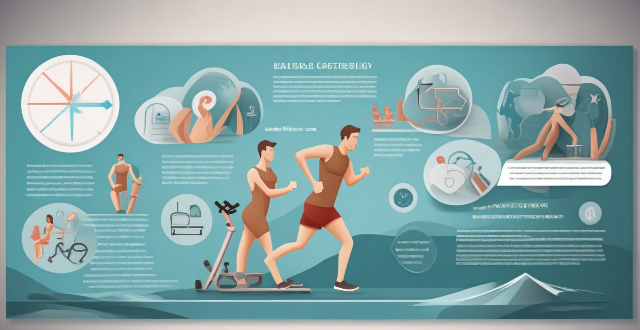
What are the best exercises for improving cardiorespiratory fitness ?
Aerobic exercises such as running, cycling, swimming, and brisk walking are effective for improving cardiorespiratory fitness. High-intensity interval training (HIIT) can increase endurance, cardiovascular health, and fat loss. Resistance training can also benefit cardiorespiratory fitness by increasing muscle mass, improving blood sugar control, and reducing the risk of injury. Finding an exercise routine that works best for you is important for long-term improvements in cardiovascular health.

Is weight-bearing exercise really necessary for bone health ?
Weight-bearing exercises are often recommended for maintaining bone health, but is it really necessary? Let's explore this topic in detail. Weight-bearing exercises include any activity that requires you to carry your own body weight, such as walking, jogging, dancing, climbing stairs, and weightlifting. These exercises can help strengthen bones and muscles, improve balance and coordination, and reduce the risk of falls. Maintaining healthy bones is crucial for overall health and well-being. Strong bones provide support and protection for your body, allowing you to move with ease and perform daily activities without pain or discomfort. Additionally, having strong bones can help prevent fractures and other injuries. Weight-bearing exercises have numerous benefits on bone health, including stimulating bone growth, improving bone density, reducing the risk of falls and injuries, and promoting overall health and well-being. However, there are some alternatives to weight-bearing exercise that may be beneficial for people who cannot engage in these types of activities. These include resistance training, yoga or Pilates, and swimming. In conclusion, weight-bearing exercises are highly recommended for maintaining bone health due to their numerous benefits on bone growth, density, and overall health and well-being. However, there are alternative exercises that may be beneficial for people who cannot engage in weight-bearing activities. It's always best to consult with a healthcare professional before starting any new exercise program.

Does the timing of exercise (morning vs. evening) affect its impact on mental health ?
The timing of exercise can have a significant impact on its effects on mental health. Morning exercise boosts mood, energy, and productivity, while evening exercise reduces stress and promotes relaxation. However, morning exercise may be difficult to stick to for some people and can cause fatigue later in the day. Evening exercise may interfere with sleep and be less consistent due to unforeseen events. Ultimately, the best time to exercise depends on individual preferences and lifestyle factors.

What are some common misconceptions about weight loss and exercise ?
This text discusses common misconceptions about weight loss and exercise, including the idea that skipping meals leads to weight loss, spot reduction is effective, more exercise equals more weight loss, weight training makes women bulky, cardio is the best way to lose weight, fad diets offer quick fixes, all calories are created equal, and you can out-exercise a bad diet. It emphasizes the importance of understanding these misconceptions to adopt healthier habits and set realistic goals for improved health and wellness.
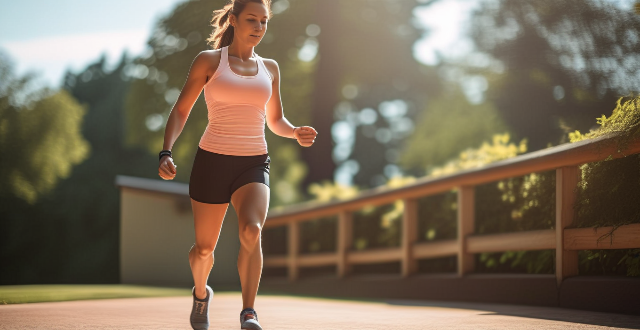
Can music help reduce perceived exertion during exercise ?
Music can help reduce perceived exertion during exercise by positively influencing mood and cognition, and acting as a distraction from bodily symptoms associated with fatigue. Numerous studies have shown the benefits of music on perceived effort levels during workouts, but individual preferences and contextual factors play significant roles. To potentially benefit from reduced perceived exertion, it's important to select music that resonates personally and matches the intensity of your workout.

How does regular exercise contribute to overall health management ?
This text discusses the importance of regular exercise for overall health management, highlighting its physical, mental, and emotional benefits. It emphasizes that exercise not only helps maintain physical health but also significantly contributes to mental and emotional well-being. The article lists various ways in which regular exercise contributes to overall health management, including improving cardiovascular fitness, aiding in weight management, enhancing muscle and bone health, boosting the immune system, preventing chronic diseases, reducing stress, improving mood, enhancing cognitive function, boosting self-esteem, providing opportunities for social interaction, and contributing to personal achievement. The text concludes by emphasizing that regular exercise is a crucial tool for managing overall health and that incorporating it into one's lifestyle is one of the best investments one can make for their health and well-being.

How does exercise affect sleep patterns and quality ?
Exercise significantly influences sleep patterns and quality. Immediate effects include increased alertness and better body temperature regulation for sleep. Long-term, regular exercise improves sleep quality and regulates sleep patterns. Different types of exercise—aerobic, anaerobic, and mindful movements like yoga—all positively affect sleep but may require varying recovery times. The timing of exercise is crucial; morning workouts set the day's tone with minimal sleep interference, while late-night exercises can hinder sleep preparation. Tailoring workout routines to individual needs optimizes rest and overall well-being.
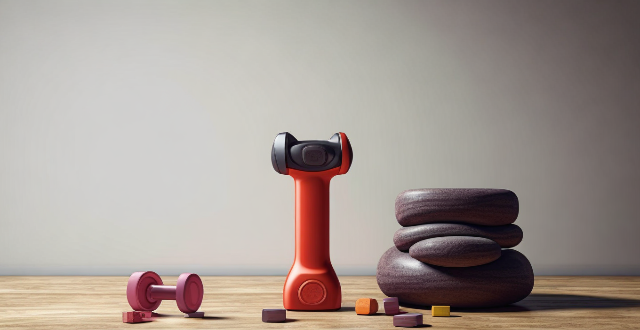
Can exercise help manage symptoms of ADHD ?
Exercise can be a powerful tool in managing symptoms of ADHD by improving focus, reducing impulsivity, increasing energy levels, and promoting better sleep. Choosing the right type of exercise, setting realistic goals, and creating a consistent routine are essential for reaping the full benefits of physical activity for ADHD management.

What are the best exercises for strength training ?
Strength training is essential for building muscle mass, increasing bone density, and improving overall physical performance. Here are some of the best exercises for strength training: 1. Barbell Squats 2. Deadlifts 3. Bench Press 4. Push-Ups 5. Pull-Ups 6. Lunges 7. Band Chest Press 8. Band Rows These exercises target multiple muscle groups throughout the body and can help you build strength, improve athletic performance, and enhance overall health and wellness.
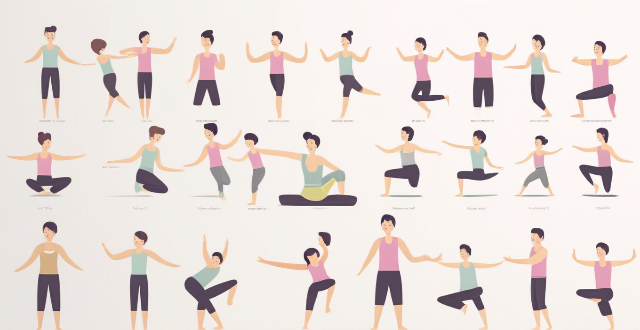
What are the best types of exercises for stress relief ?
The best types of exercises for stress relief include aerobic exercise, yoga, pilates, tai chi, and strength training. Aerobic exercise increases your heart rate and makes you sweat, which can help to reduce stress levels. Yoga helps to calm the mind and body, reducing stress and anxiety levels. Pilates focuses on strengthening the core muscles, improving posture and balance, and increasing flexibility. Tai Chi combines deep breathing with slow, flowing movements and has been shown to be effective in reducing stress levels. Finally, strength training involves using resistance bands or weights to build muscle strength and endurance.

What are the best practices for integrating international students into local communities ?
Integrating international students into local communities is crucial for their academic success, personal growth, and overall well-being. Here are some best practices to ensure a smooth transition and meaningful integration: 1. Orientation Programs a. Comprehensive Orientation b. Buddy System 2. Cultural Exchange Programs a. Language Exchange b. Cultural Festivals and Celebrations 3. Academic Support and Mentorship a. Tutoring Services b. Faculty and Student Mentorship 4. Social Inclusion and Networking a. Clubs and Organizations b. Networking Events 5. Housing and Accommodation a. Diverse Housing Options b. Accessible Resources 6. Health and Wellness Resources a. Health Services b. Wellness Programs By implementing these best practices, institutions can create an inclusive environment that welcomes international students and helps them thrive both academically and personally within the local community.

What are the best mobile operators in my area ?
Choosing the best mobile operator in your area requires careful consideration of several factors, including coverage, data speeds, pricing, customer service, and network reliability. Some of the best options based on these criteria are Verizon, AT&T, and T-Mobile. Each operator has its own strengths and weaknesses, so it's important to do your research and choose the one that best meets your needs and budget.

What are the best restaurant deals in my area ?
Finding the best restaurant deals in your area can be a fun and rewarding experience. Here are some tips on how to find the best deals near you: check local listings, follow social media, sign up for newsletters, use restaurant review websites, and ask friends and family for recommendations.

How often should I exercise to see weight loss results ?
To see weight loss results, start with low-intensity workouts and gradually increase intensity over time. Aim for at least 150 minutes of moderate-intensity exercise per week, mix up your workouts, and incorporate strength training. Consistency is key!

What are the best exercises for improving mental health ?
Engaging in regular physical activities is crucial for maintaining good mental health. Some of the best exercises for improving mental health include cardiovascular exercises like running, cycling, and swimming; strength training exercises like weightlifting, resistance bands, and bodyweight exercises; and yoga and meditation practices like Hatha yoga, mindfulness meditation, and Tai Chi. By incorporating these exercises into your routine, you can reduce stress and anxiety levels while also improving overall well-being.
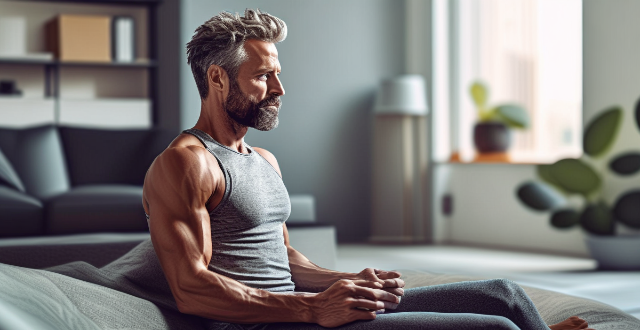
Can exercise be a substitute for medication in treating some forms of emotional distress ?
This article explores the potential benefits of exercise in treating emotional distress, such as anxiety and depression, and discusses whether it can be a substitute for medication. While exercise has numerous benefits for mental health, including stress reduction and improved sleep quality, it may not be suitable for everyone or replace medication in all cases. Factors such as symptom severity and individual differences should be considered when determining the best approach to managing emotional distress. Exercise should be viewed as part of a comprehensive treatment plan that includes medical care, therapy, and lifestyle changes tailored to the individual's needs.

How can I monitor my heart rate during exercise for optimal health results ?
Monitoring your heart rate during exercise is crucial for efficiency, safety, and progress tracking. Tools include heart rate monitors, smartphone apps, fitness trackers, and chest straps. Before starting, consult a doctor and choose the right tool. During exercise, wear your monitor, warm up, stay in your target heart rate zone, adjust intensity, and cool down. After exercise, record data, analyze results, and rest. Best practices include calibrating devices, staying hydrated, being consistent, and listening to your body.
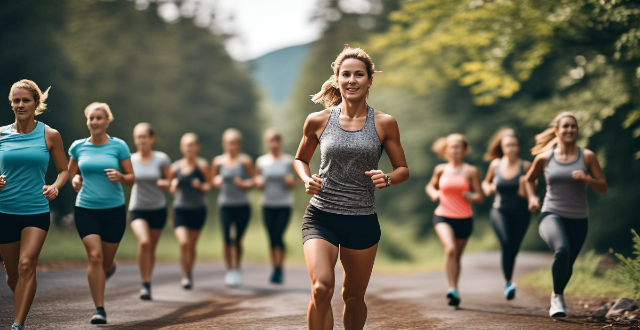
What are the best workout routines for women ?
The article provides a list of the best workout routines for women, including cardiovascular exercises like running, cycling, and swimming; strength training exercises like weight lifting, resistance bands, and bodyweight exercises; yoga and Pilates; high-intensity interval training (HIIT) like Tabata, circuit training, and jump rope; group fitness classes like Zumba, kickboxing, and barre; outdoor workouts like hiking, rock climbing, and stair climbing; and low-impact workouts like walking, elliptical machine, and rowing machine. These workouts can help women improve their overall fitness, strength, flexibility, balance, and cardiovascular health.
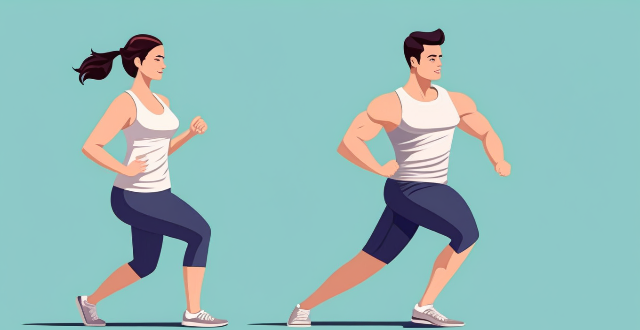
What are the best types of exercises for seniors ?
The article discusses the best types of exercises for seniors, including cardiovascular exercises such as walking and swimming; strength training using bodyweight exercises, resistance bands, dumbbells, and kettlebells; and flexibility and balance exercises like yoga, Tai Chi, Pilates, and stretching. Regular exercise is crucial for seniors to maintain their overall health and well-being, and a variety of exercises can help improve physical fitness and quality of life.

Can exercise be a substitute for psychotherapy in treating mild depression ?
This article explores the potential of exercise as a treatment for mild depression and its possible limitations. While exercise can boost mood, reduce stress, improve sleep quality, and enhance self-esteem, it may not address the cognitive aspects of depression or be suitable for everyone. Therefore, it should not be considered a complete substitute for psychotherapy in all cases.

Can exercise reverse or slow the progression of existing chronic diseases ?
**Can Exercise Reverse or Slow the Progression of Existing Chronic Diseases?** Chronic diseases like diabetes, heart disease, and cancer often require lifelong management. Many wonder if exercise can play a role in mitigating these conditions. This discussion explores the potential benefits of physical activity for those with chronic illnesses. **Benefits of Exercise for Chronic Diseases:** - **Cardiovascular Disease**: Improved blood pressure, reduced risk of heart attack, enhanced lipid profile. - **Diabetes**: Better blood sugar control, aid in weight management, reduced complications. - **Cancer**: Improved quality of life, reduced fatigue, potentially better survival rates. **How Exercise Contributes to These Benefits:** - Increased blood flow ensures better organ oxygenation and nutrient delivery. - Anti-inflammatory effects alleviate symptoms of chronic diseases. - Boosted immune function helps fight infections and potentially cancer cells. **Implementing an Exercise Program:** - **Consultation**: Always consult your healthcare provider before starting. - **Gradual Progression**: Start slowly and build up over time. - **Balanced Routine**: Include cardio, strength training, and flexibility exercises. - **Monitoring Response**: Track how your body responds to different exercises. **Conclusion:** While exercise might not reverse chronic diseases outright, it significantly slows their progression and enhances well-being. Tailoring an exercise program under medical guidance allows those with chronic conditions to actively manage their health, improving their quality of life.
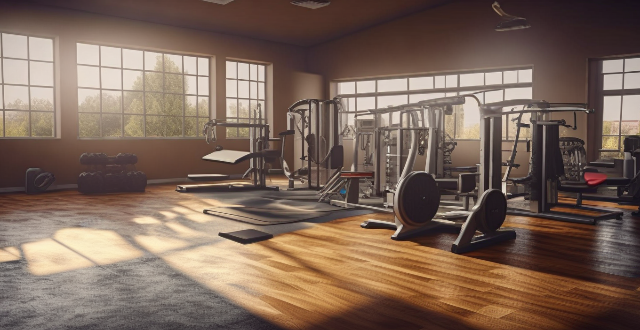
What are the best exercises for building muscle at the gym ?
The article discusses the best exercises for building muscle at the gym, including free weights, machines, and bodyweight exercises. Free weight exercises like squats, deadlifts, and bench press target multiple major muscle groups for overall strength and muscle growth. Machine exercises such as leg press, lat pulldown, and seated row allow for isolation of specific muscles while still allowing heavy lifting. Bodyweight exercises including push-ups, pull-ups, and squat jumps require no equipment and can be done anywhere for convenient muscle building.